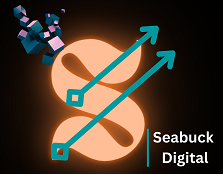
Introduction to ChatGPT for SEO Content Creation
SEO and content marketing go together like peanut butter and jelly—but let’s be real, coming up with consistent, high-quality blog posts is exhausting. That’s where ChatGPT steps in as the content writer’s best friend. With the right ChatGPT prompts, this tool isn’t just a text generator—it becomes your idea machine, SEO consultant, and content strategist.
Why SEO Content Still Reigns Supreme in 2025
Despite AI-generated search and evolving user behavior, organic traffic is still king. 68% of online experiences begin with a search engine (BrightEdge). SEO blogs help brands build authority, answer customer questions, and convert readers into buyers.
How AI Like ChatGPT Is Changing the Content Game
ChatGPT doesn’t just speed things up. It helps bridge the gap between what users are searching for and how brands respond—with relevant, structured, and engaging blog posts that rank and convert.
Benefits of Using ChatGPT for SEO Blog Writing
Time-Saving and Cost-Effective
Let’s face it: writing blog posts takes time. ChatGPT can cut content creation time by more than half. Plus, it reduces reliance on expensive freelance writing or in-house teams for every single post.
Scalability Without Compromising Quality
With well-crafted prompts, you can churn out 10–20 articles a week while maintaining consistency. That means you can scale your content calendar without sacrificing quality or SEO value.
Data-Driven Keyword Usage and Relevance
ChatGPT can be trained (via prompt engineering) to naturally weave in primary keywords, long-tails, and related search terms—essential for improving search relevance and topical authority.
Understanding How Prompts Work with ChatGPT
What Is a Prompt?
A prompt is your instruction set. Think of it as talking to your AI assistant. You’re not just saying “write an article”—you’re telling it how, what tone, what structure, and what purpose.
How to Structure Effective Prompts
Crafting good prompts is like writing a recipe. The more specific and detailed your instructions, the better the output.
Clarity and Intent
Avoid vague prompts. Instead of saying, “Write about digital marketing,” say:
“Write a 1500-word blog post in a casual tone about how small businesses can use digital marketing to grow their brand in 2025.”
Layering Instructions for Depth
Want an outline, meta description, and FAQ section? Say so. Layering your prompt helps ChatGPT know what to deliver and how to format it.
Types of SEO Blog Posts ChatGPT Can Help With
Listicles and Roundups
Want a “Top 10 SEO Tools” article? ChatGPT is great at breaking these down with comparisons and structured formatting.
How-To Guides and Tutorials
From “how to optimize meta titles” to “step-by-step link building,” the tool excels at procedural content.
Product Comparisons and Reviews
Perfect for affiliate marketers or SaaS content, ChatGPT can structure clear, unbiased comparisons that drive clicks.
Pillar and Cluster Content for Topical Authority
Use it to create foundational articles (pillar content) and support pieces (cluster posts) to improve internal linking and boost search visibility.
ChatGPT Prompts to Kickstart Blog Content
Prompts to Generate Blog Post Ideas
- “Give me 20 blog post ideas for a SaaS company offering CRM software.”
- “What trending topics in 2025 should a content marketing blog cover?”
Prompts for Writing Article Outlines
- “Create a detailed outline for a blog post titled ‘Beginner’s Guide to Technical SEO’ with H2, H3, and H4 headings.”
Prompts for Writing Introductions and Hooks
- “Write a compelling intro for a blog titled ‘Top 10 Keyword Research Tools in 2025.’ Use a conversational tone.”
Prompts for Optimizing Headlines for SEO
- “Suggest 10 SEO-friendly titles for a post about social media marketing tips.”
ChatGPT Prompts for On-Page SEO Elements
Writing Meta Titles and Descriptions
- “Write a meta title (under 60 characters) and meta description (under 160 characters) for a blog about email marketing strategies.”
Adding Internal Links and CTAs
Ask:
“Suggest 3 internal linking opportunities and a strong call-to-action for a blog post on content strategy.”
Formatting with Proper Headers (H1-H4)
Prompt example:
“Format this content using H2 for sections, H3 for subpoints, and H4 for tips or examples.”
Advanced SEO-Focused ChatGPT Prompts
Incorporating Semantic Keywords and LSI Terms
- “Rewrite this paragraph and naturally include the keywords: ‘search visibility’, ‘SEO strategy’, and ‘keyword optimization.’”
Optimizing for Featured Snippets and People Also Ask
- “Write a concise paragraph to target a featured snippet for the query: ‘How to improve domain authority?’”
Writing for Google’s E-E-A-T Guidelines
Prompt tip:
“Write an expert-level blog on local SEO strategies. Use a professional tone, cite data, and structure it to reflect experience and expertise.”
Examples of Powerful ChatGPT Prompts for SEO Bloggers
Real-World Prompt Templates You Can Copy
- “Write a 2000+ word SEO-optimized blog post on [topic], include an intro, H2-H4 structure, conclusion, and 5 FAQs.”
- “Create a content brief for a blog titled ‘X Ways to Boost Website Traffic.’ Include target keywords and user intent.”
Customizing Prompts for Different Niches
From fashion to fintech, just tweak your prompts:
“Write a fun, casual blog post for a Gen Z audience on the latest eco-friendly fashion trends.”
Common Mistakes to Avoid When Using ChatGPT for SEO Blogs
Over-Reliance Without Human Editing
AI is powerful, but it still needs your touch. Always review for accuracy, tone, and originality.
Keyword Stuffing and Lack of Originality
Resist the temptation to overload with keywords. Focus on user intent and natural language instead of robotic phrasing.
Tools to Pair With ChatGPT for Better Results
SEO Surfer, Ahrefs, and Clearscope
Pair ChatGPT with SEO tools to get real-time keyword data, SERP analysis, and competitor research.
Grammarly, Hemingway, and Quillbot for Polishing
Use these to fine-tune your grammar, clarity, and readability after generating content.
How to Continuously Improve Prompt Results
Analyze What Works with Analytics
Check Google Analytics or Search Console to see what content performs. Then reverse-engineer successful prompts.
Fine-Tune Prompts Based on Performance Data
Got a blog post that did well? Refine the prompt used and apply that structure to future posts.
Case Study: From Zero to Top 3 Rankings Using ChatGPT
The Strategy
A SaaS brand created 30 SEO articles in 6 weeks using structured prompts and keyword data.
The Execution
They used prompts like:
“Write a 2500-word SEO blog on CRM trends with stats, examples, FAQs, and an informal tone.”
The Results
In just 3 months, 7 articles ranked in the top 3, organic traffic increased by 64%, and lead conversions jumped by 31%.
Final Thoughts on Using ChatGPT Prompts for SEO Success
ChatGPT is more than just a robot spitting out words—it’s a strategic asset. When you master ChatGPT prompts and prompt writing, you unlock a productivity boost that helps scale your SEO efforts faster than ever. It won’t replace creativity or strategy, but it will supercharge your output. Blend AI with human insight, and you’re on the road to SERP domination.
FAQs About ChatGPT and SEO Blogging
1. How accurate is ChatGPT for SEO writing?
It’s fairly accurate with the right prompts, but always verify facts and optimize manually for best results.
2. Can ChatGPT replace human SEO writers?
Nope. It’s a great assistant, but human editing and strategic thinking are still essential.
3. What’s the best prompt to start a blog post?
Try: “Write an engaging intro for a blog on [topic] in a conversational tone with a question and hook.”
4. Does Google penalize AI-generated content?
Google doesn’t penalize AI content per se—it penalizes low-quality content. As long as it’s useful, you’re good.
5. Can I use ChatGPT for affiliate blog writing?
Absolutely. Just ensure the content is honest, engaging, and complies with your affiliate guidelines.
Read More:
Will AI-Generated Content Rank in 2025?

